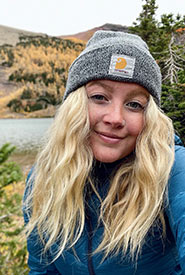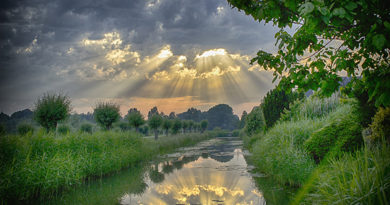NCC: Land Lines – Candid captures: Unveiling grassland wildlife secrets
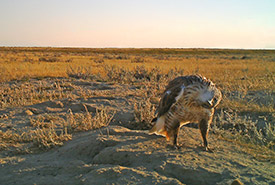
Ferruginous hawk (Photo by NCC)
Whether it’s the dense lodgepole pine forests of Cypress Hills or the rolling hills of the surrounding grasslands, southeast Alberta is a remarkable and unique region to work in and explore. As a conservation coordinator for the Nature Conservancy of Canada (NCC), I help monitor conservation properties in the region and the species living within them.
It’s a special experience. In the early morning, the landscape comes alive with birdsong, and the vegetation glows as the sun rises over the horizon. I am not an early morning type of person, but I never once regretted waking up at 4 a.m. to help survey grassland species.
One of my favourite things about working in the grasslands is the tranquility of seeing nothing but untouched prairie as far as the eye can see. Most days, I don’t even see another vehicle.
Over the summer, part of my job was deploying remote wildlife cameras, otherwise known as trail cameras, at these properties. These small cameras are motion-triggered and are used to see what species might be living within or moving through an area. Trail cameras are an efficient and effective monitoring tool because they allow us to record wildlife over weeks or even months without affecting their behaviour.
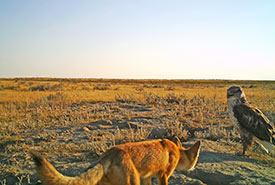
Swift fox and ferruginous hawk (Photo by NCC)
After retrieving the cameras, looking through the photos is always exciting because you never know what you might have captured!
Recently, I collected a camera that was deployed last summer and fall at one of our grassland properties. Sorting through the files, I first had to delete hundreds of photos triggered by moving grass before finding anything noteworthy.
But then something interesting popped up on my computer screen! There was a series of images of a pronghorn looking curiously right at the camera. Pronghorn are always on the lookout for threats like predators and travel the same migration routes year after year. They seem to be aware of changes in their environment, so perhaps this individual noticed the camera as something new in the area and wanted to check it out?
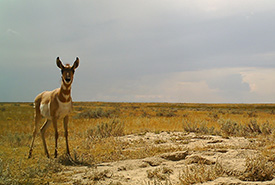
Pronghorn (Photo by NCC)
The pronghorn wasn’t the only species at risk I saw in the photos. Surprisingly, there was an image of a ferruginous hawk that landed right in front of the camera. A typical hunting method for ferruginous hawk is to wait on the ground and strike when prey happens to run by. In this image, thes hawk is standing right next to a large colony of Richardson’s ground squirrels, a species also captured on the camera. Ferruginous hawk are grassland specialists and rely on Richardson’s ground squirrels as a major food source. So, this bird was likely looking out for a meal!
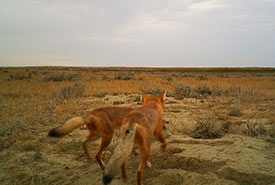
Swift foxes (Photo by NCC)
Lastly, I saw several swift foxes in the images. As these foxes all looked similarly, it is hard to estimate their age or sex. Nonetheless, it was very exciting to see that there were several of these threatened foxes in the area — and hopefully they are reproducing nearby. To me, swift fox is one of the most iconic grassland species due to their successful reintroduction in Canada after being extirpated in the 1930s. Their progress on the road to recovery gives me a lot of hope.
Grasslands are being lost at an alarming rate, along with the species that call the grasslands their home. It is extremely rewarding to monitor these species on NCC properties and know that their habitat will continue to be protected by NCC and other land stewards in the area. Every day, I feel very fortunate to call this my office.
I want to help keep these incredible grassland species in Canada and you should too! If you would like to support the conservation of our grassland wildlife, visit conservemcintyreranch.ca.


